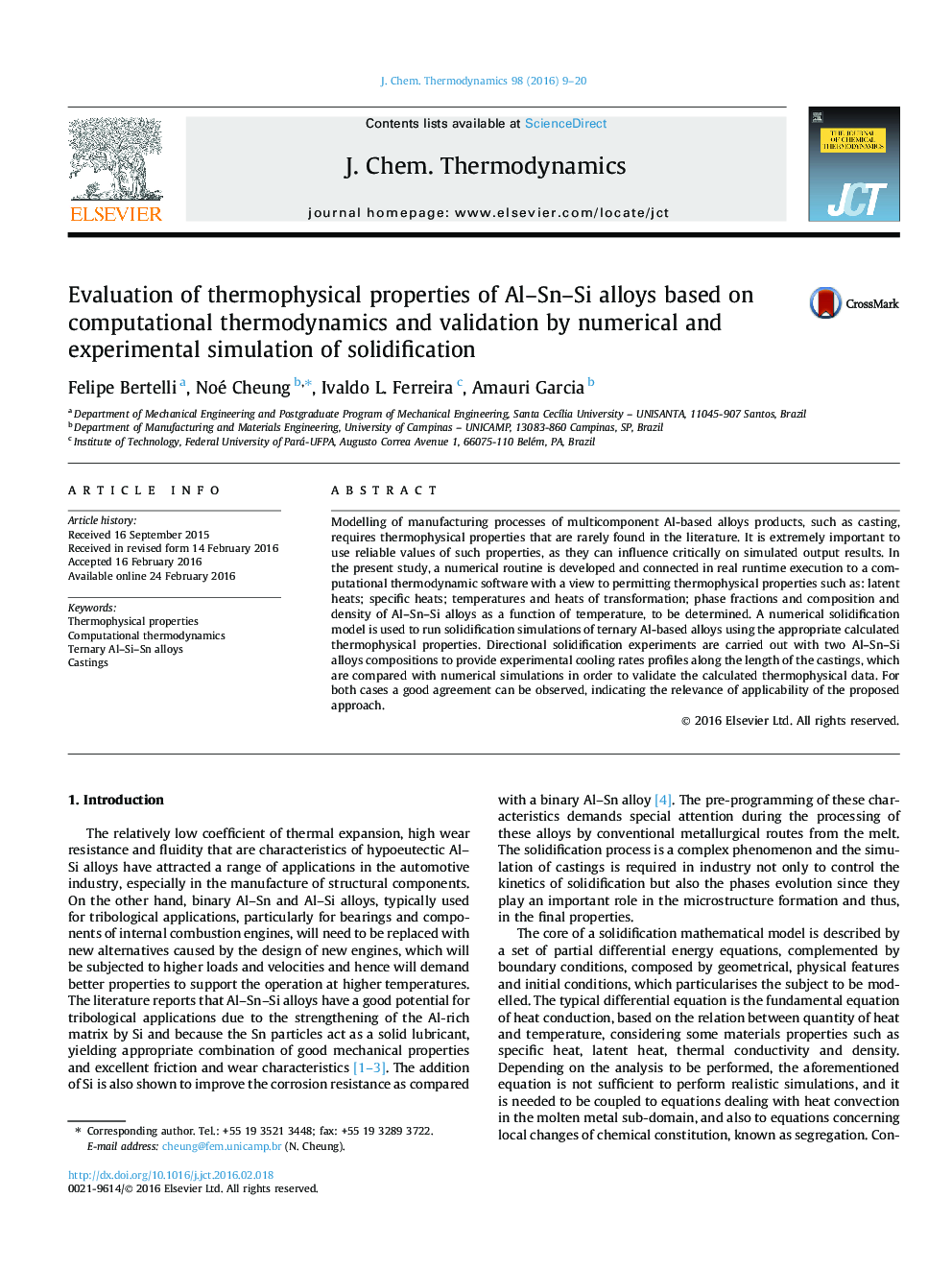| Article ID | Journal | Published Year | Pages | File Type |
|---|---|---|---|---|
| 214973 | The Journal of Chemical Thermodynamics | 2016 | 12 Pages |
•A numerical routine coupled to a computational thermodynamics software is proposed to calculate thermophysical properties.•The approach encompasses numerical and experimental simulation of solidification.•Al–Sn–Si alloys thermophysical properties are validated by experimental/numerical cooling rate results.
Modelling of manufacturing processes of multicomponent Al-based alloys products, such as casting, requires thermophysical properties that are rarely found in the literature. It is extremely important to use reliable values of such properties, as they can influence critically on simulated output results. In the present study, a numerical routine is developed and connected in real runtime execution to a computational thermodynamic software with a view to permitting thermophysical properties such as: latent heats; specific heats; temperatures and heats of transformation; phase fractions and composition and density of Al–Sn–Si alloys as a function of temperature, to be determined. A numerical solidification model is used to run solidification simulations of ternary Al-based alloys using the appropriate calculated thermophysical properties. Directional solidification experiments are carried out with two Al–Sn–Si alloys compositions to provide experimental cooling rates profiles along the length of the castings, which are compared with numerical simulations in order to validate the calculated thermophysical data. For both cases a good agreement can be observed, indicating the relevance of applicability of the proposed approach.
